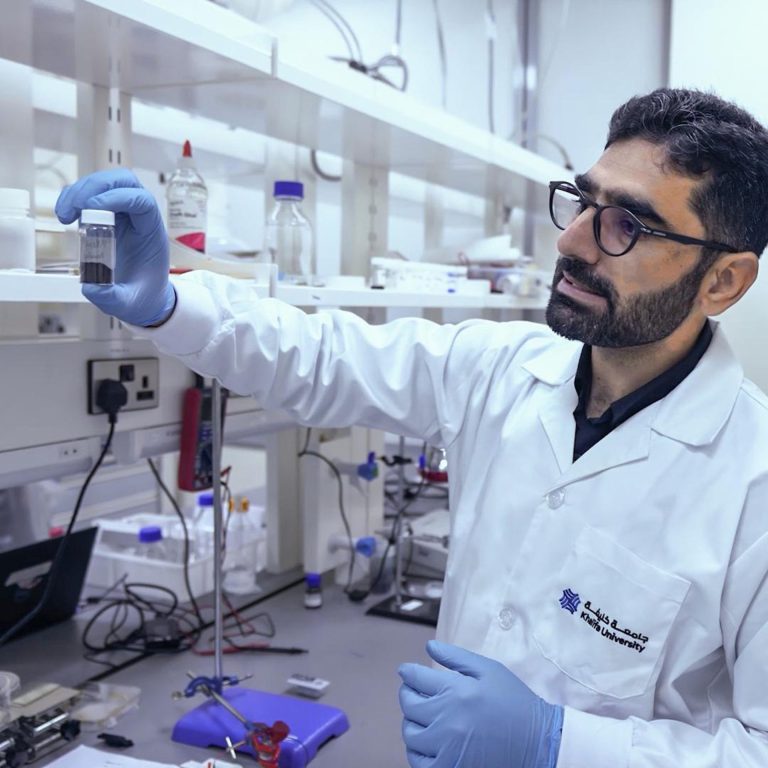A greener route to metal-organic frameworks
A simple, eco-friendly method produces highly ordered copper-based metal-organic frameworks.
Khalifa University has developed a user-friendly method that generates high-performance porous materials known as 2D conjugated metal-organic frameworks without requiring solvents. The new approach could offer scalable and environmentally conscious solutions to many issues related to energy storage, optoelectronics and electrocatalysis.
Two-dimensional conjugated metal-organic frameworks have recently shown potential as electrically conductive materials because of their outstanding intrinsic electrical and optical properties. Key to these physical properties is their well-defined molecular architecture, which involves inorganic nodes connected to organic building blocks bearing pre-oriented functional groups for metal coordination. The linkers consist of benzene-derived backbones that promote 2D electron transport via π-conjugation in the resulting networks.
Despite their potential applications, few approaches have been developed to generate these networks. This is because existing organic backbones, which consist of expensive and difficult to synthesize polycyclic aromatic hydrocarbons, which are expensive and difficult to synthesize. Only a handful of functional groups, such as carboxylic acids, amines, and thiols, have been explored for metal coordination.
Imagine yourself holding a metal atom with both hands instead of one. Two hands give much stronger structure, and the metal cannot leach out
Dinesh Shetty
Salicylaldehyde linkers, which contain the oxygen-based functional groups aldehyde and hydroxyl next to each other, are typically used to fabricate covalently bound organic networks. In contrast, the researchers decided to investigate its ability to create metal-organic frameworks. They chose a salicylaldehyde linker comprising a benzene core bearing three aldehyde–hydroxyl pairs. Each aldehyde–hydroxyl pair can bind to one metal by forming two bonds, which is crucial for network stability.
Now, an international team led by Dinesh Shetty, from the university’s Center for Catalysis and Separations, has devised an eco-friendly method that readily produces 2D conjugated frameworks by combining linkers called salicylaldehydes with copper ions.
“Having these groups next to each other helps provide a better coordination and make the array of ligands directly attached to the metal ions, or coordination sphere, complete,” Shetty says. “Imagine yourself holding a metal atom with both hands instead of one. Two hands give much stronger structure, and the metal cannot leach out,” he explains.
The researchers added a commercially available salicylaldehyde powder to several copper salts in a mortar, ground the powders together using a pestle without catalyst or organic solvent, and heated the solid mixtures to 90°C for five hours. The resulting networks showed good crystallinity and excellent stability. In a proof-of-concept experiment, these networks exhibited promising electrical conductivity when deposited on copper foil.
The team is now evaluating various salicylaldehyde-based networks experimenting with other metal ions and expanding the aromatic component of the linkers to optimize the stability and electrical conductivity of their system.
References
1. Mohammed, A. K., Pena-Sánchez, P., Pandikassala, A., Gaber, S., AlKhoori, A. A., Skorjanc, T., Polychronopoulou, K., Kurungot, S., Gándara, F. & Shetty, D. Salicylaldehydate coordinated two-dimensional-conjugated metal-organic frameworks. Chemical Communications 59, 2608–2611 (2023). | Article




